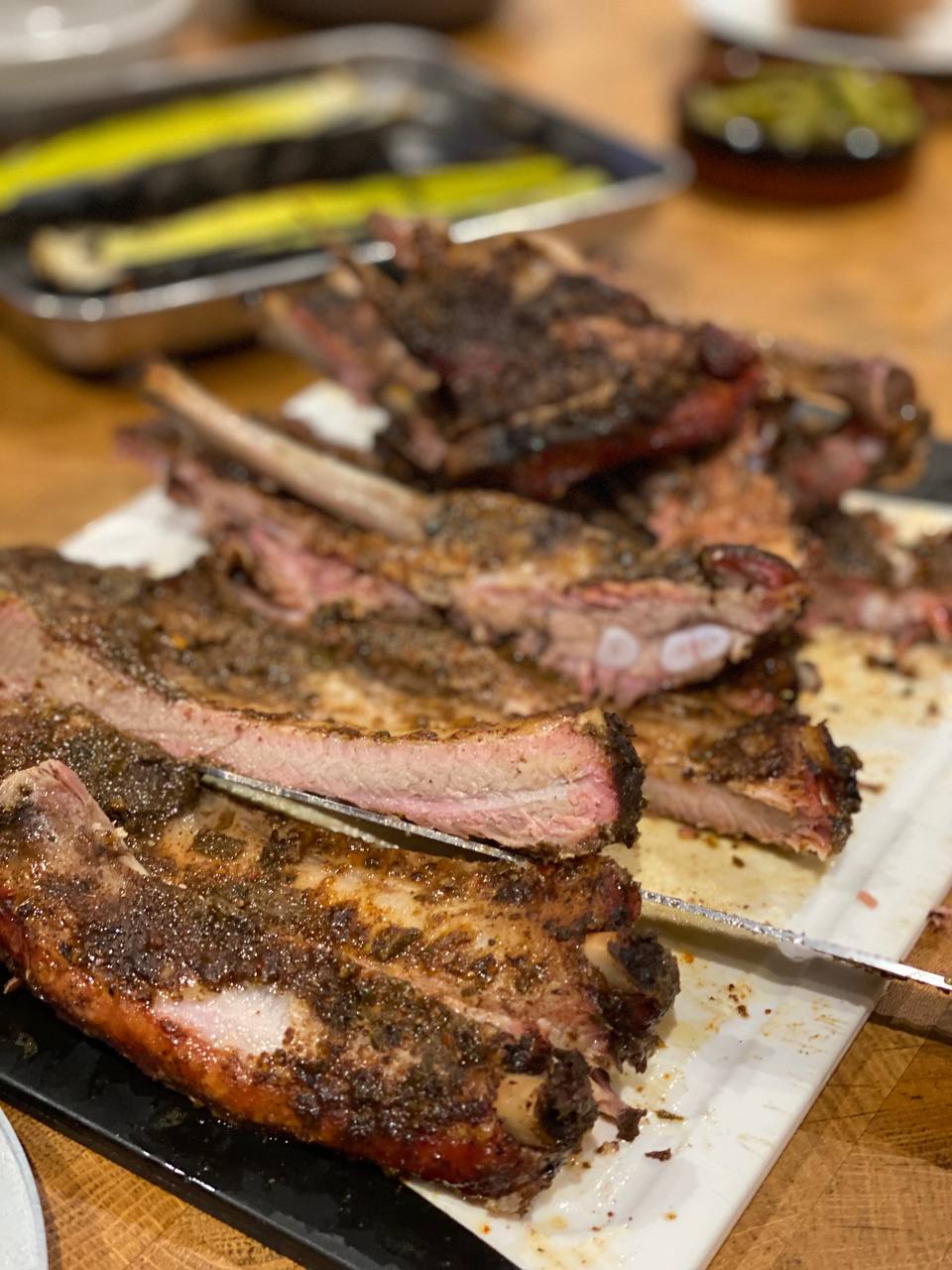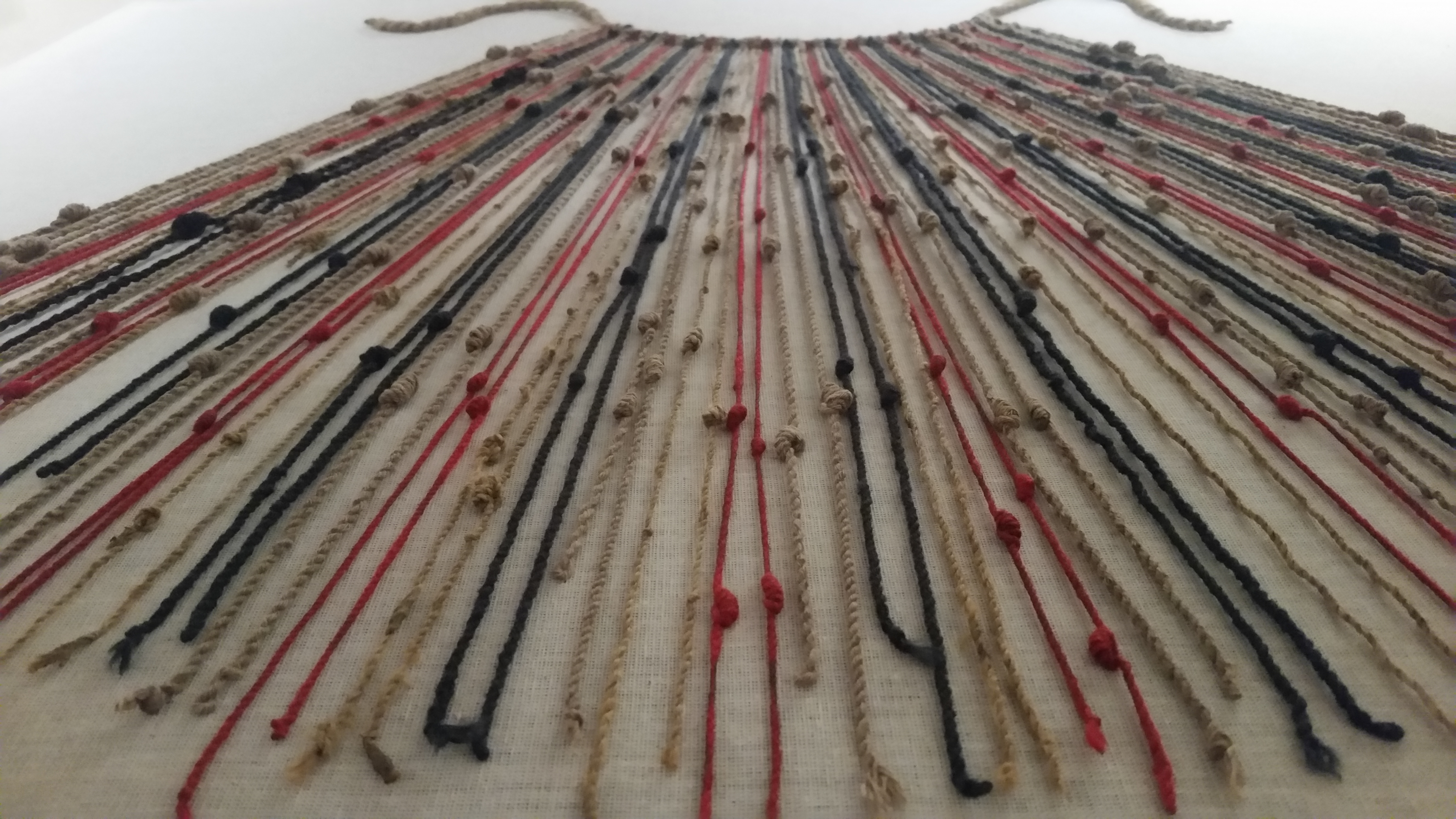Tuesday Triage #88
- TUESDAY TRIAGE #88 by Vadim Drobinin
- On patience
- Things I enjoyed reading
- 1. Food Packaging by scanofthemonth
- 2. Why I love Formula 1 by @jorisroovers
- 3. On Being Indispensable by @sofuckingagile
- 4. Contributing to Complex Projects by @mitchellh
- 5. Magritte’s Prophetic Surrealism by Jackson Arn
- 6. A Better Way to Divide the Pie by Barry Nalebuff
- 7. The Untold Story Of How The Aeron Chair Was Born by Cliff Kuang
- 8. It happened to me: I accidentally attended a crypto bro dinner by Alex Kruger
- 9. Have iPhone Cameras Become Too Smart? by Kyle Chayka
- 10. Find More Ways to Be an Outsider by @arthurbrooks
- Things I didn't know last Tuesday
- 1. Hanami
- 2. In-flight surgery with a coat-hanger and silverware
- 3. Inca used knots to tell stories
- 4. Gravity hill
- 5. Jerrycan
- 6. Museo della Cucina
- 7. Relative age effect
- 8. Ancient eye test
- 9. Toxicoscordion venenosum
- 10. Isle of Dogs
- Book of the week
- Thank you and see you in a week!
TUESDAY TRIAGE #88
by Vadim Drobinin ¶
Your weekly crème de la crème of the Internet is here!
22.03.2022 (read in browser)
-
Intro
Whatever is on my mind this week. -
Things I enjoyed reading
Ten-ish articles I found worth reading. -
Things I didn't know last Tuesday
Ten-ish facts I didn't know when I wrote the previous edition. -
Book of the week
Some thoughts on the latest book I've read.
On patience ¶
One of those things I strive to be better at, and yet constantly fail is being more patient.
There are probably dozens of examples I could come up with, but here is the most recent one.
Some time ago I tried making brisket using the classic BBQ method: low and slow. Usually I make briskets in sous vide, which is way more reliable, but one can't ignore such a huge technique as smoking and pretend that sous vide could replace it completely.
This time I decided to go further and tried out a few more recipes by the same author, all while smoking a Boston butt to turn it into pulled pork, and a few racks of spare ribs to eat in the meantime.

The recipes are relatively straightforward, just waiting and occasionally spraying the meat to let smoke "stick" to it better.
I managed to do the latter well, but the former was harder, and even with remote thermometers I had to open up the lid from time to time to check on the fire.

The results were fine and properly pulling apart, but I still feel like there is a lesson to learn:

Maybe next time I should kick it off even earlier in the morning, and do some more meat the day before to avoid the urge to keep checking on it.
Things I enjoyed reading ¶
1. Food Packaging by scanofthemonth ¶
Probably one of the best pieces of interactive journalism I've seen this year. Folks put apart different food packaging and ran it through a CT scan:
Our CT scan of an unopened Coco Vita bottle confirms that the foil does indeed remain intact until you open the cap. The complexity of the cap design is evident in this cross-section: each cap contains a combination of threads, cams, followers, and even a saw blade.
I never knew there is so much thought in even the tiniest pieces of packaging, like a piece of foil on a pack of coconut water.
2. Why I love Formula 1 by @jorisroovers ¶
I never watched Formula 1 (at least conciously), and yet so many smart people around me enjoy it. Seems like this post at least might be answering why:
A huge part of Formula 1 is centered around the race cars. This isn’t because “cars are cool” (although 🤔), but because car performance and reliability tends to make a much bigger difference than any other factor during the race.
It’s not uncommon to see top drivers doing extremely well one season and then struggle the next season, entirely because of difference in (relative) car performance. While for an untrained eye, F1 cars all look pretty much identical (except for the colors, called liveries), there’s a ton of small variations between the cars that end up making all the difference.
Probably I should give it a try (worth mentioning that I don't even have a driving license and capable of telling cars apart only based on their colours).
3. On Being Indispensable by @sofuckingagile ¶
This is a very good essay on being the knowledge keeper for a team, a company, or a product.
One thing I instituted that helped was a specific Teams channel called Knowledge Transfer. Any questions that would normally have been DM’d to me could be posted there, publicly for all to see. In theory, others could step up to answer these. I could also forward DMs there to respond to publicly or refuse to answer in DM and require them to retype their question in the Knowledge Transfer channel. Rarely did others step up to answer, but it became more like a SoFuckingAgile office hours, which was still a big improvement.
It indeed brings lots of stress and unwritten responsibilities, but also gives a great negotiation leverage. Removing an indispensable person from an equation (e.g while they're off) highlights both problems with organisational structure and also the importance of that person to the overall success.
4. Contributing to Complex Projects by @mitchellh ¶
Open source could be intimidating despite thousands of people trying to make it way more friendly.
This is a good advice on contributing to any complex project, not necessarily open-sourced:
The first step to understanding the internals of any project is to become a user of the project. You do not have to become an expert user, but my personal graduation criteria for this step is to try to build something real using the project, even if it is small or simple. For example, prior to contributing to the Zig programming language, I created a handful of real libraries.
Becoming the user first is something I always do myself. It's pretty much impossible to make something better without using it yourself first, and while there are lots of things where I could provide some generic advice, that won't be as good as after I spend some time using the product myself.
5. Magritte’s Prophetic Surrealism by Jackson Arn ¶
I am pretty bad at arts, and while I took gluing words together under control to some extent, being able to enjoy paintings in a museum is still a hit-or-miss adventure for me.
That being said, Magritte is one of my favourite painters, mostly because his works are surprisingly eye-pleasing and understandable.
A century ago, the only people who called the world “surreal” were capital-S Surrealists: poets and painters, many of them rooted in Paris, who sought to dig up the buried treasures of the unconscious and convert them into words and images. Today, nobody seriously doubts that the world is a lowercase-s surreal place. Advertising is surreal. Politics is surreal. Dating is surreal. Half of television and all of the Internet is surreal.
And the author does a great job at giving a bit more insight into his thinking process.
6. A Better Way to Divide the Pie by Barry Nalebuff ¶
Here is a very detailed (and only a tiny bit) mathematical story about fair ways to negotiate.
There is a different—and more logical—way to divide the pizza. It’s more logical because it focuses on what the negotiation is really about: the extra 6 slices created by an agreement. If Alice and Bob don’t reach a deal, they will have a total of 4 + 2 = 6 slices. If they reach a deal, they will have a total of 12 slices. The value of reaching a deal is to go from 6 to 12 slices. That increase of 6 slices is what’s at stake or what I call the negotiation pie. To get those 6 slices, Alice and Bob are equally needed. Because they have equal power, the 6 slices should be split equally. In addition, each side gets their fallback. This leads to an overall division of 4 + 3 = 7 slices to Alice and 2 + 3 = 5 slices to Bob.
And in that sense slicing up a pizza is indeed a negotiation, and there are plenty of factors in play.
7. The Untold Story Of How The Aeron Chair Was Born by Cliff Kuang ¶
I was working in an office a few years ago, and one of our engineers got himself a used chair bought from Ebay.
When it arriced I didn't understand all the fuss until I tried to sit in it – even though it wasn't configured for me, it felt much more different than any other office chair I've seen.
I don't remember if it was the Aeron, but even if it wasn't it was something from the same category.
The Aeron was a throne perfectly tailored to Silicon Valley’s vanities. With a frame of high-tech molded plastic, a skin of woven plastic fibers pulled taut, and mechanics that accommodated slouchy rebels, the chair flattered the people who bought it. It was the best engineering money could buy, and it seemed purpose-built for squeaky-voiced billionaires inventing the future in front of a computer. But the Aeron’s origin story isn’t so simple. The apotheosis of the office chair–and perhaps the only one ever to become a recognizable and coveted brand name among cubicle-dwellers–was actually the unexpected fruit of a 10-year effort to create better furniture for the elderly.
I spend 99% of my time in front of the computer standing, so for me it probably won't be a worthy investment, but every since I tried sitting in one I can't really judge people who spend so much money on chairs.
8. It happened to me: I accidentally attended a crypto bro dinner by Alex Kruger ¶
A hilarious recall of a meeting with a bunch of people interested in cryptocurrencies and all things related:
The dinner continued like this for another hour or so. I took notes about things I don’t think anyone actually understands, like yield farming, cold storage, and stablecoin treasuries. And then I went home and fell into a hole of radicalization, learning about how our financial system is to be replaced by what I still think might just be a well-marketed Ponzi with a very loyal tribe.
I worked with a few exceptionally talented people who were shaping the future of crypto half a decade ago, but never got myself too interested in it. Now it's probably too late.
9. Have iPhone Cameras Become Too Smart? by Kyle Chayka ¶
Definitely not the first complaint about post-processed iPhone images I've seen.
On the 12 Pro, by contrast, the digital manipulations are aggressive and unsolicited. One expects a person’s face in front of a sunlit window to appear darkened, for instance, since a traditional camera lens, like the human eye, can only let light in through a single aperture size in a given instant. But on my iPhone 12 Pro even a backlit face appears strangely illuminated. The editing might make for a theoretically improved photo—it’s nice to see faces—yet the effect is creepy. When I press the shutter button to take a picture, the image in the frame often appears for an instant as it did to my naked eye. Then it clarifies and brightens into something unrecognizable, and there’s no way of reversing the process.
These days lots of people switch back to "dumb" cameras and film, but Apple keeps pushing towards a beautiful world where processing powers would help to deliver the best pictures possible.
Frankly I am on the side of the latter.
10. Find More Ways to Be an Outsider by @arthurbrooks ¶
This is a quite inspiring article on the value of being out of the spotlight.
However, with all due respect to Plato, outsiders can actually do very well. True, they generally suffer somewhat in the short term after a move. For example, one recent study showed that international college students rated their life satisfaction about 4 percent lower at the end of their first semester than at the beginning of the term. But a mountain of evidence shows that in the long run, being an outsider predicts well-being and emotional strength; it may even protect against depression.
I would probably call myself an outsider, at least to some extent, and at least for the majority of my childhood. Probably it did only good though.
Things I didn't know last Tuesday ¶
1. Hanami ¶
Folks in Japan have viewing parties for cherry blossoms, and I am not really surprised.
Once people know when the blooming will be in their area, it is custom to start organising picnic parties for hanami (flower viewing). This could be a picnic in a bento box with rice balls and fried chicken, or oden, which is a hotpot with white radish, fried tofu, fish cakes and eggs, cooked on a camping stove. People often have these with cans of beers or cups of sake (Japanese rice wine).
Also I keep suspecting that the trees here in London are something else:

Although maybe they're just smaller over here.
2. In-flight surgery with a coat-hanger and silverware ¶
Imagine doing a surgery on the plane withough a proper medical kit?
With the limited medical equipment on board, Wallace and Wong had to improvise heavily. The medical kit had lidocaine – a local anaesthetic – but the catheter in the kit was designed only for urinary catheterisation and was too soft for use as a chest tube. The doctors fashioned a trocar from a metal clothes hanger to stiffen the catheter, and a check valve from a bottle of water with holes poked in the cap.
The story has a happy ending (the patient spent the rest of the flight eating and watching movies), but that's a good reason as to why people shouldn't board the plane feeling unwell.
3. Inca used knots to tell stories ¶
The story itself is very interesting too, but the main takeaway is that Inca had a way to record language in knots.
The knots are 3D, so they have form, direction, relative position, color, thickness, multiple configurations. Each element carries a different meaning: far from the body, close to the body—these distances affect what quantity is recorded. A three-dimensional Sudoku. Multivalent, multi-referential, and yet at the same time precise. According to Spanish accounts from the mid-16th century, quipu were on par with the Old World’s most complex scripts. One Jesuit missionary tells of an Inca woman who brought him a quipu bearing her entire life story. In knots. Incredible.
Looks really nice:

4. Gravity hill ¶
Real-world optical illusions are the best:
A gravity hill [...], is a place where the layout of the surrounding land produces an optical illusion, making a slight downhill slope appear to be an uphill slope. Thus, a car left out of gear will appear to be rolling uphill against gravity.
This image doesn't explain it well enough, but there are more videos on YouTube for those curious:
5. Jerrycan ¶
I didn't know that these oversized flasks for fuel had a name and a very eventful history.
Pleiss, the American, recognized immediately the significance this new type of efficient liquid transport held for Germany. The jerrycan was superior in every way to the outdated American cans adopted from the WWI-era and infinitely more practical than the British “flimsies”—British low-grade four-gallon cans made of tin. The name was apt.
Check out the handles: they're designed in such a way the flask could be carried by one or two people.
6. Museo della Cucina ¶
A new museum opening in Rome should be pretty cool, and judging by the sight they're quite serious about the topic:
The Museo della Cucina, opening in May, will be dedicated to exploring one of Italy’s great passions. The institution stands on the spot of Rome’s first legendary meal: Palatine Hill, where Romulus and Remus were breastfed by the she-wolf Lupa more than 2,700 years ago, according to Roman mythology, and subsequently returned to found the city.
Would have to account for it when we make it to Rome again.
7. Relative age effect ¶
Different cut off dates produce a bias that favours people born earlier in the year.
The term relative age effect (RAE), also known as birthdate effect or birth date effect, is used to describe a bias, evident in the upper echelons of youth sport and academia, where participation is higher amongst those born earlier in the relevant selection period (and lower for those born later in the selection period) than would be expected from the distribution of births.
So statistically speaking those born in January tend to be more successful than those born in December, and so on.
8. Ancient eye test ¶
Never thought about ancient eye tests but that makes so much sense:
Mizar and Alcor served as an ancient eye test. If you had lived in the time of the early Romans and could see Alcor, you would have been eligible to be an archer in the Roman army. If not, you likely would have served in another capacity for the Caesar.

Modern ways are not much better to be honest, if only a bit more reliable.
9. Toxicoscordion venenosum ¶
There is a plant that kills everything except one species of bees:
All parts of the plant are poisonous. It is dangerous for humans as well as livestock. Consumption of 2% to 6% of the body weight of the animal is likely to be fatal. Along with other alkaloids, zygacine and other toxic esters of zygadenine are the primary neurotoxic alkaloids contributing to the plant's toxicity.
The plant is visited by a specialist mining bee, Andrena astragali, which is possibly the only bee that can tolerate its toxins. Others are fatally poisoned.
I am a bit surprised it is not native to Australia.
10. Isle of Dogs ¶
There is a bunch of odd names in London, but Isle of Dogs is probably the most memorable.
The first known use of the name 'Isle of Dogs' was in 1520, with Samuel Pepys then describing it as the "unlucky Isle of Dogs" in the 1660s. Despite harking back half a millennium, the origin of the name isn't known for certain — and in fact little is known about the history of the area before the last hundred years or so. It was simply marshland that flooded regularly.
My favourite version of the name is the mistake in "Isle of Ducks", because there are indeed lots of ducks in the area.
Book of the week ¶
As I probably mentioned a few times before, out of all beverages the one I avoid the most is tea, because usually it smells really good and yet the flavour just doesn't keep up with the smell and leaves me disappointed. I do my best to stay open-minded though, and Joseph Wesley Uhl's The Art and Craft of Tea is probably the first book on the topic that I genuinely enjoyed:
What does a discussion on the proper aeration of water mean to a chai wallah in Mumbai who was naturally taught to pour the hot masala chai from one container to another at two to four feet?
On one hand, by pulling the chai he creates a more enhanced body and, thus, a better mouthfeel, making the tea actually taste better. But, on the other hand, if you try explaining mouthfeel to the chai wallah, he will probably look at you like you are drab and uninteresting. If asked, the chai wallah will invariably tell you that he goes through such ceremony because people enjoy it. It provides a moment of magic for someone’s otherwise routine morning. More important than improving the taste of the tea, the chai wallah focuses on creating an experience, a moment that elevates a simple morning tea into something greater than merely a caffeine and sugar rush.
The author dedicates the majority of the book to the chemistry behind brewing tea, and tries to explain as much as possible about all ingredients involved, from adressing myths about reusing boiled water to explaining the difference in soil where the plants were grown.
At the same time there is even a brief chapter on food pairings, and using tea in cocktails.
The cocktails are not in any way extraordinary, but that's an important part of the modern drinking culture, so kudos for mentioning.
I wouldn't say that finishing the book made me more willing to sip hot coloured water more often, but hey, at least now I know a bit more about research put into making this exact colours in my cup.
Thank you and see you in a week! ¶
If you have any questions, or want to suggest a link for the next newsletter, please drop me a message on Twitter or reply to this email.
Cheers! 🍸